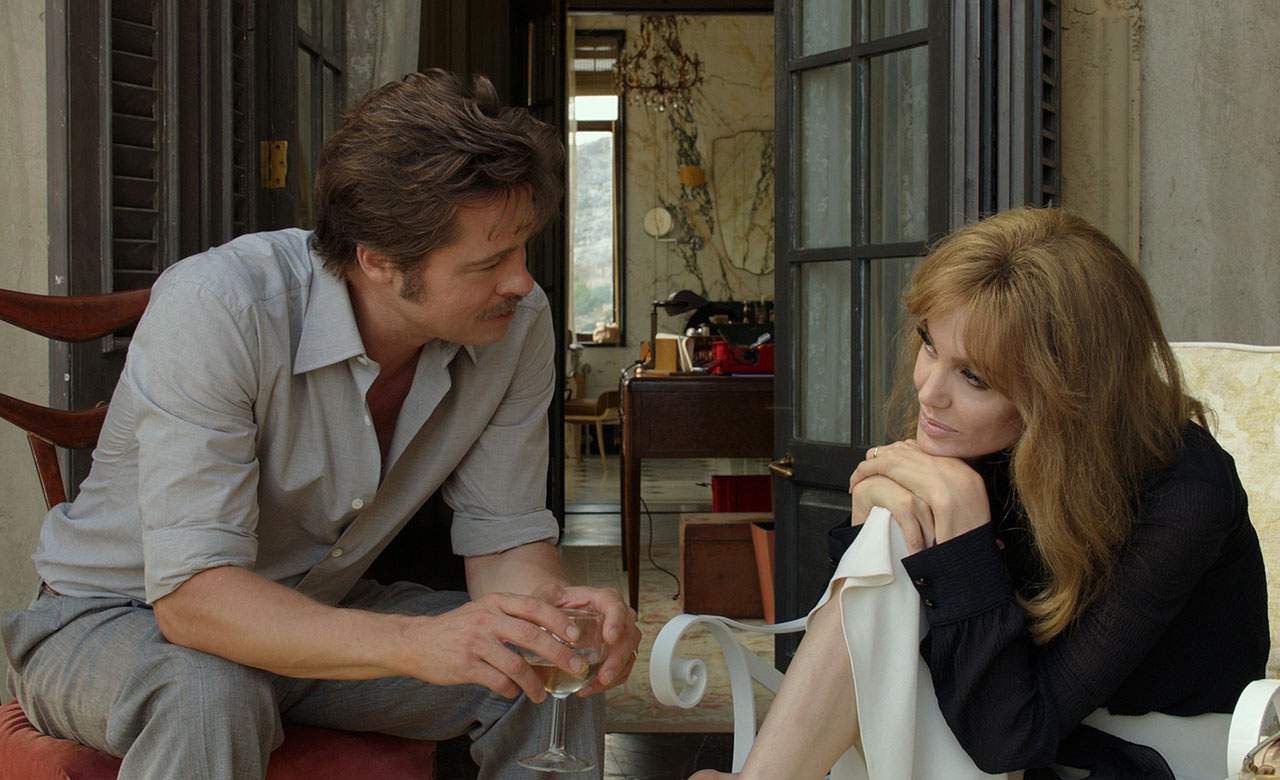By the Sea
Angelina Jolie Pitt writes, directs and stars alongside her husband in a tale of voyeurism and romantic disillusion.
Overview
In By the Sea, a couple retreats to a scenic ocean-side spot, their motivation as apparent as their baggage. Roland (Brad Pitt) is a writer struggling to put pen to paper, while Vanessa (Angelina Jolie Pitt) is a former dancer bearing emotional wounds from a past tragedy. Their individual troubles feed into a larger, common issue: the inertia in their marriage. The couple continue to look the part, but they're just going through the motions. He wears partially unbuttoned shirts, wanders around with a drink constantly in his hand, and spends more time with a local barkeep (Niels Arestrup) than with his wife. She smokes behind oversized sunglasses, stretches out on their balcony, and speaks as little as possible. They're not confronting their woes — they're avoiding them.
Stepping behind the lens for her third stint as a director, Jolie Pitt explores the struggling state of a stale relationship in a script of her own making — and that she's taking on a starring role, alongside her actual husband, is by no means insignificant. Just don't expect an insight into the personal lives of one of the most famous couples on the planet. Instead, Jolie Pitt toys with the concept of being watched – something the real-life duo is no doubt familiar with, both on-screen and off. Vanessa finds a peephole into an adjacent room, discovers that she enjoys peering into the lusty bliss of a honeymooning couple (Melvil Poupaud and Mélanie Laurent), and eventually shares the experience with Roland.
They gaze at the private moments of others, the audience observes them in turn, and more is seen than said. By the Sea convincingly conveys the unspoken elements of voyeurism; the forbidden becomes thrilling, whether spying on a neighbour or reading accounts of celebrity relationships. The film also shows how becoming invested in the life of someone else from afar can both mask and amplify the problems of those doing the looking, such as unhappiness and alienation.
Indeed, while this may be the first time the couple have shared the screen since 2005's Mr. and Mrs. Smith, it's not just a case of lovers jetting off to a picturesque setting and sulking around a nice hotel. Jolie Pitt's feature is astute and incisive in its examination of the ebbs and flows of long-term bonds, and owes a debt to big screen melodrama and minimalism. The ghosts of great '70s European cinema – of character-based theatrics allowed to unfold slowly, and of pain rippling beyond composed faces and lavish surroundings – can be felt in every frame.
Director of photography Christian Berger, a veteran of Michael Haneke's films such as Cache and The White Ribbon, certainly assists in evoking a throwback vibe and a sense of closeness. Nevertheless, it's the two leads who remain the true stars of the show. They weather some trying dialogue as well as an unsatisfying late revelation, and help the movie's repetition and tension become rhythmic and immersive. Their performances are also the reason that, even when the feature doesn't quite come together, it still remains hard to forget. In presenting a tale of intimacy and scrutiny, they're a pair no one can tear their eyes away from.





